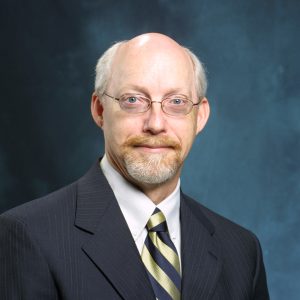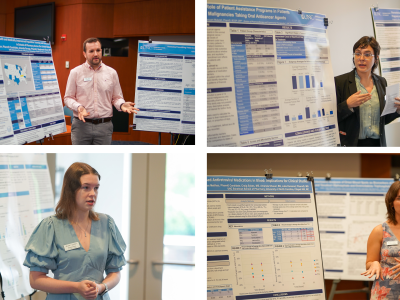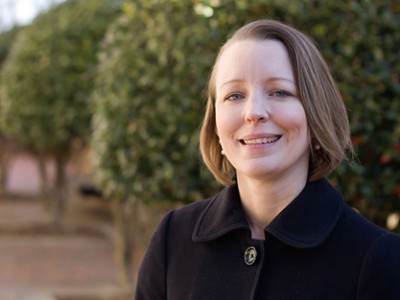December 26, 2022
“When you pay attention to people with chronic medical conditions, they do better…An absurdly simple idea, but a challenging one to execute.”
If a diabetic patient’s blood sugar is high, they might schedule a visit with their endocrinologist to discuss how they can lower it. If an asthmatic patient has a flare-up, they might work with their immunologist to better prepare for the next one. If a hypertensive patient wants to lower their cholesterol, they might set goals alongside their cardiologist.
A key player in treating each condition is the pharmacist. Yet, despite their years of training and accumulated medication knowledge, pharmacists tend to be overlooked in treatment management. In visiting our local pharmacies, a routine exchange takes place:
“Name?… Date of birth?… Do you have any questions for the pharmacist?… Have a nice day.”
Should a problem arise, many patients reach out to our primary care physicians and skip over the pharmacist who fills the space between.

Barry Bunting, PharmD ’98, worked as a pharmacist and clinical manager at Mission Hospital in Asheville, NC following his graduation from the UNC School of Pharmacy. Alongside his community colleagues, he engaged in the same mundane exchanges on the job.
“As a student coming out [of the UNC School of Pharmacy], you’re trained up, you’re highly educated, you’re extremely knowledgeable about medications, doses, side effects and the desired outcomes,” said Bunting. “Then you go into an environment, unless it’s a hospital, where you’re pretty much just getting paid to count and pour.”
Bunting’s supervisor and Mission Hospital’s pharmacy director, Dan Garrett, set out to change this. In 1997, he began work with a team commissioned by the North Carolina Association of Pharmacists (NCAP) to answer the question: What would it take to get pharmacists paid for providing clinical services beyond the dispensing?
In order for the project to succeed, the committee had to demonstrate value in paying pharmacists to provide enhanced care, said Bunting. According to him, the literature at the time pointed to improved outcomes when pharmacists played an intervening role in treatment; what those improved outcomes were, however, is what the team had to convey.
“That’s where I got involved,” said Bunting. Volunteering under Garrett, Bunting explored what improved outcomes translated to, be they fewer heart attacks and strokes or lower health care costs.
Garrett and the NCAP team demonstrated the benefits of collaborative care through what would become the Asheville Project.
“The idea was to develop a model of care where community pharmacists could get paid for doing the clinical work,” said Garrett. “Out of that grew the idea of doing a health management program.”
What did a health management program look like? Bunting said it involved recruiting and training community pharmacy owners across Asheville who agreed to provide individual patient care. Pharmacists would schedule routine appointments with patients to assess their medication and its effectiveness. Garrett teamed up with the City of Asheville, offering this enhanced care program to city employees with chronic conditions such as diabetes, high blood pressure, and asthma.
The City of Asheville operates through a self-insured structure, meaning they pay employee medical costs themselves. By enrolling in the covered program, city employees could learn more about their condition, get more involved in treatment and frequent the doctor’s office less. Better blood sugar control, blood pressure and cholesterol management led to things like fewer heart attacks, strokes, amputations, and dialysis, said Bunting. As a result, this meant lower healthcare costs for Asheville.
Stephanie Kiser, an Eshelman School of Pharmacy professor and alumna, worked on the front line of the program, offering enhanced care to her pharmaceutical patients.
“What we learned over the years with the Asheville Project was that it does take a team-based model,” said Kiser. “There’s absolutely the right role for a pharmacist in terms of medication adherence, understanding utilization of medications, communicating with providers or when a patient is challenged with a medication.”
With the project’s success in North Carolina, its benefits were bound to ripple elsewhere. Garrett, who is now retired, worked for the American Pharmacy Association Foundation out of Washington, DC to replicate the Asheville Project throughout the country. Twenty-five years later, the project has achieved nation-wide success, taught by PharmD programs throughout the US.
“It should not come as a surprise that when you pay attention to people with chronic medical conditions, they do better,” said Bunting. “The uniqueness of the Asheville Project was examining the savings associated with people doing better. An absurdly simple idea, but a challenging one to execute.”
Latest News

Dean Angela Kashuba receives Carolina Alumni Faculty Service Award

RASP poster presentations capture student research



